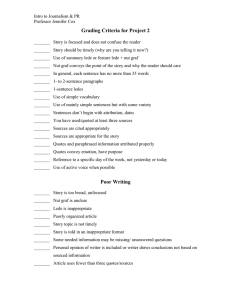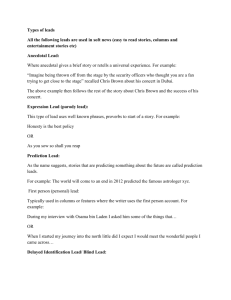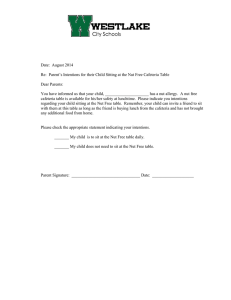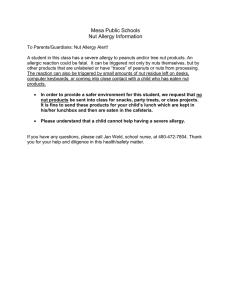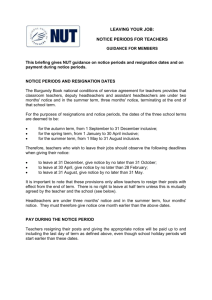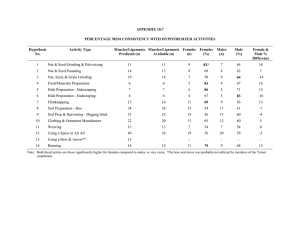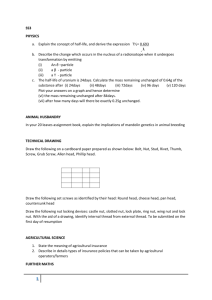Chapter 7 - Appalachian State University
advertisement
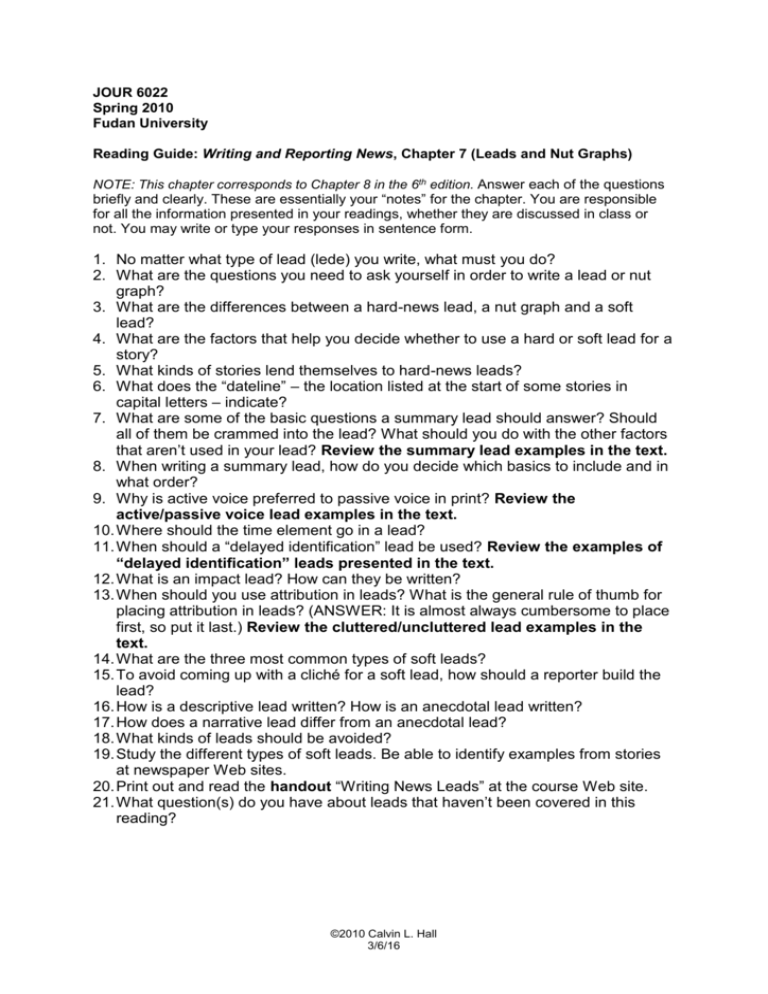
JOUR 6022 Spring 2010 Fudan University Reading Guide: Writing and Reporting News, Chapter 7 (Leads and Nut Graphs) NOTE: This chapter corresponds to Chapter 8 in the 6th edition. Answer each of the questions briefly and clearly. These are essentially your “notes” for the chapter. You are responsible for all the information presented in your readings, whether they are discussed in class or not. You may write or type your responses in sentence form. 1. No matter what type of lead (lede) you write, what must you do? 2. What are the questions you need to ask yourself in order to write a lead or nut graph? 3. What are the differences between a hard-news lead, a nut graph and a soft lead? 4. What are the factors that help you decide whether to use a hard or soft lead for a story? 5. What kinds of stories lend themselves to hard-news leads? 6. What does the “dateline” – the location listed at the start of some stories in capital letters – indicate? 7. What are some of the basic questions a summary lead should answer? Should all of them be crammed into the lead? What should you do with the other factors that aren’t used in your lead? Review the summary lead examples in the text. 8. When writing a summary lead, how do you decide which basics to include and in what order? 9. Why is active voice preferred to passive voice in print? Review the active/passive voice lead examples in the text. 10. Where should the time element go in a lead? 11. When should a “delayed identification” lead be used? Review the examples of “delayed identification” leads presented in the text. 12. What is an impact lead? How can they be written? 13. When should you use attribution in leads? What is the general rule of thumb for placing attribution in leads? (ANSWER: It is almost always cumbersome to place first, so put it last.) Review the cluttered/uncluttered lead examples in the text. 14. What are the three most common types of soft leads? 15. To avoid coming up with a cliché for a soft lead, how should a reporter build the lead? 16. How is a descriptive lead written? How is an anecdotal lead written? 17. How does a narrative lead differ from an anecdotal lead? 18. What kinds of leads should be avoided? 19. Study the different types of soft leads. Be able to identify examples from stories at newspaper Web sites. 20. Print out and read the handout “Writing News Leads” at the course Web site. 21. What question(s) do you have about leads that haven’t been covered in this reading? ©2010 Calvin L. Hall 3/6/16

